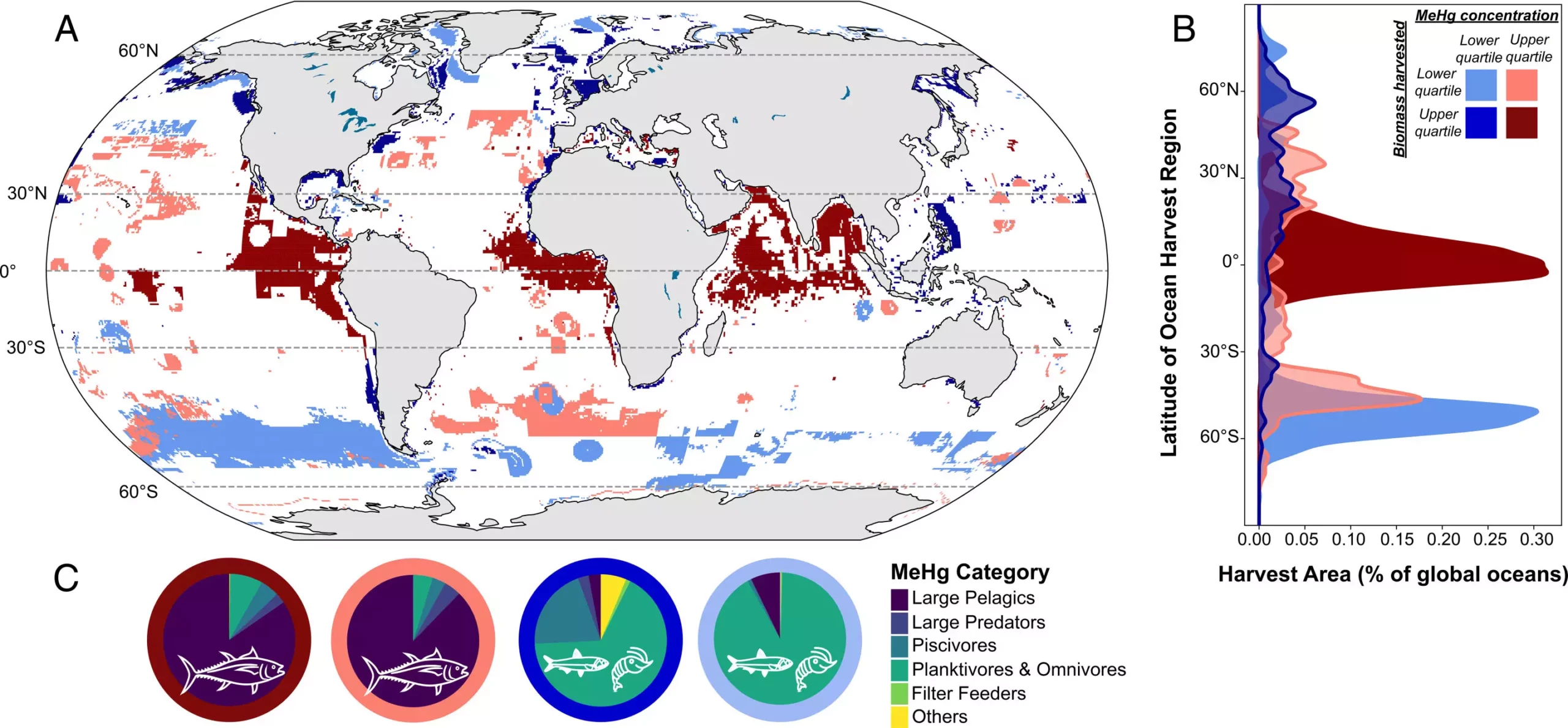Industrial fishing practices have far-reaching impacts, not only on the marine ecosystem but also on human health. In a world where seafood is a primary source of nutrition for millions, the revelation that our oceans are teeming with methylmercury—a potent neurotoxicant—poses serious concerns. Emerging research from the Harvard John A. Paulson School of Engineering and Applied Sciences, in collaboration with universities in Delaware and British Columbia, sheds light on this pressing issue. It highlights that industrial fisheries, especially those targeting large pelagic fish like tuna, are responsible for over 70% of the methylmercury fished from our oceans. This alarming statistic underscores the imperative for public awareness and policy change to safeguard human health against the perils associated with mercury exposure, particularly in children and vulnerable populations.
The seafood market has witnessed a significant boom in the consumption of large pelagic species such as tuna in recent decades. This surge can largely be attributed to advancements in fishing technologies, including onboard freezing and fish aggregating devices, which facilitate mass catches. The increasing accessibility of these species in grocery stores worldwide creates a paradox; while it adds variety to diets, it also leads to greater consumption of fish with high levels of methylmercury. Unlike smaller fish, which tend to accumulate fewer toxins, these larger species are at the pinnacle of the food chain and thus subject to increased biomagnification of harmful substances.
Understanding mercury’s journey from the source to our plates requires delving into chemistry and biology. Mercury enters the atmosphere through various human activities, including coal combustion and waste incineration, as well as from natural events like volcanic eruptions. Once deposited into oceans, it undergoes a transformation; microorganisms convert it into methylmercury, particularly in warm tropical and subtropical waters. This conversion is critical, as methylmercury is the only form that magnifies as it travels up the food chain, accumulating in the bodies of top predators like tuna. As these fish consume smaller prey, their mercury levels multiply, posing a threat to anyone who consumes them.
The research conducted by Mi-Ling Li and her team demonstrates that industrial fishing in regions where methylmercury is prevalent amplifies human exposure to this toxic substance. It raises an alarming question: How can we continue to meet the growing demand for seafood without compromising public health? The reality is that our current fishing strategies favor species renowned for their high mercury content, pushing healthier options off the market.
Furthermore, the essential nutrients typically associated with fish—such as selenium and omega-3 fatty acids—are found in lower concentrations in those harvested from warmer waters. This nutritional deficit poses a double challenge: not only are consumers susceptible to harmful toxins, but they also miss out on vital nutrients necessary for health.
Amid the industrial fishing narrative lies another critical aspect—the plight of subsistence fisheries. Many small communities rely heavily on fishing for sustenance, often consuming significantly higher quantities of fish than the average population. Research indicates that 84% to 99% of these fisheries likely exceed permissible methylmercury exposure thresholds, exposing vulnerable populations to health risks for which they are not responsible. The irony cannot be understated; those least involved in the pollution contributing to mercury’s presence are the first to bear the consequences.
Given these insights, what is the path forward? A clear pivot towards sustainable fishing practices and better choices in seafood consumption is essential. Encouraging the consumption of small pelagic fish—such as sardines and anchovies—could prevent the further encroachment of methylmercury into human diets. These fish not only possess lower mercury levels but are also rich in essential nutrients.
It is crucial for consumers, policymakers, and the fishing industry alike to recognize the interconnectedness of our choices. Advocating for greater transparency in seafood sourcing and investing in research to develop cleaner fishing methods will help ensure that future generations can safely enjoy the bounty of the oceans.
The challenges posed by industrial fishing and methylmercury contamination cannot be ignored. With informed decisions and a collective effort towards sustainability, we can navigate these treacherous waters and work towards a healthier future for our oceans and our communities.

